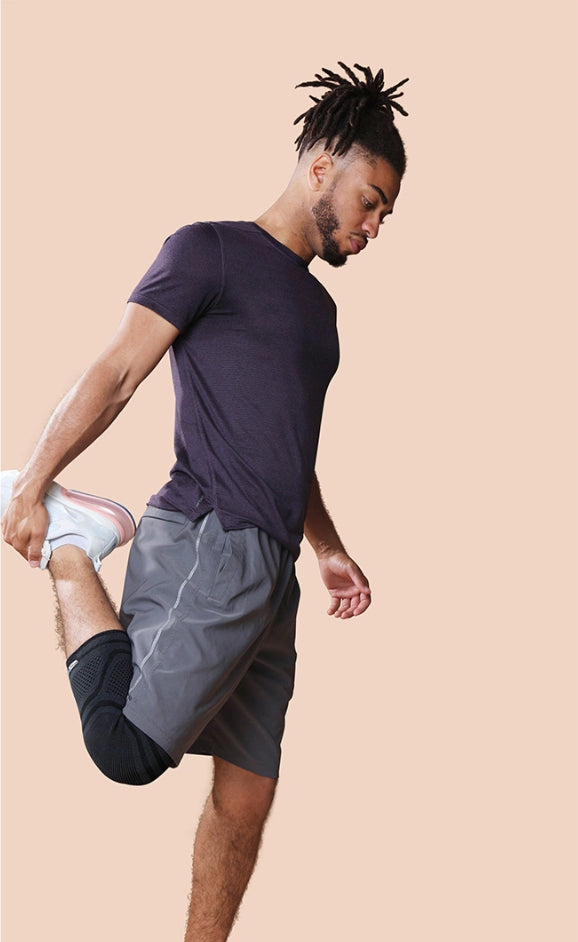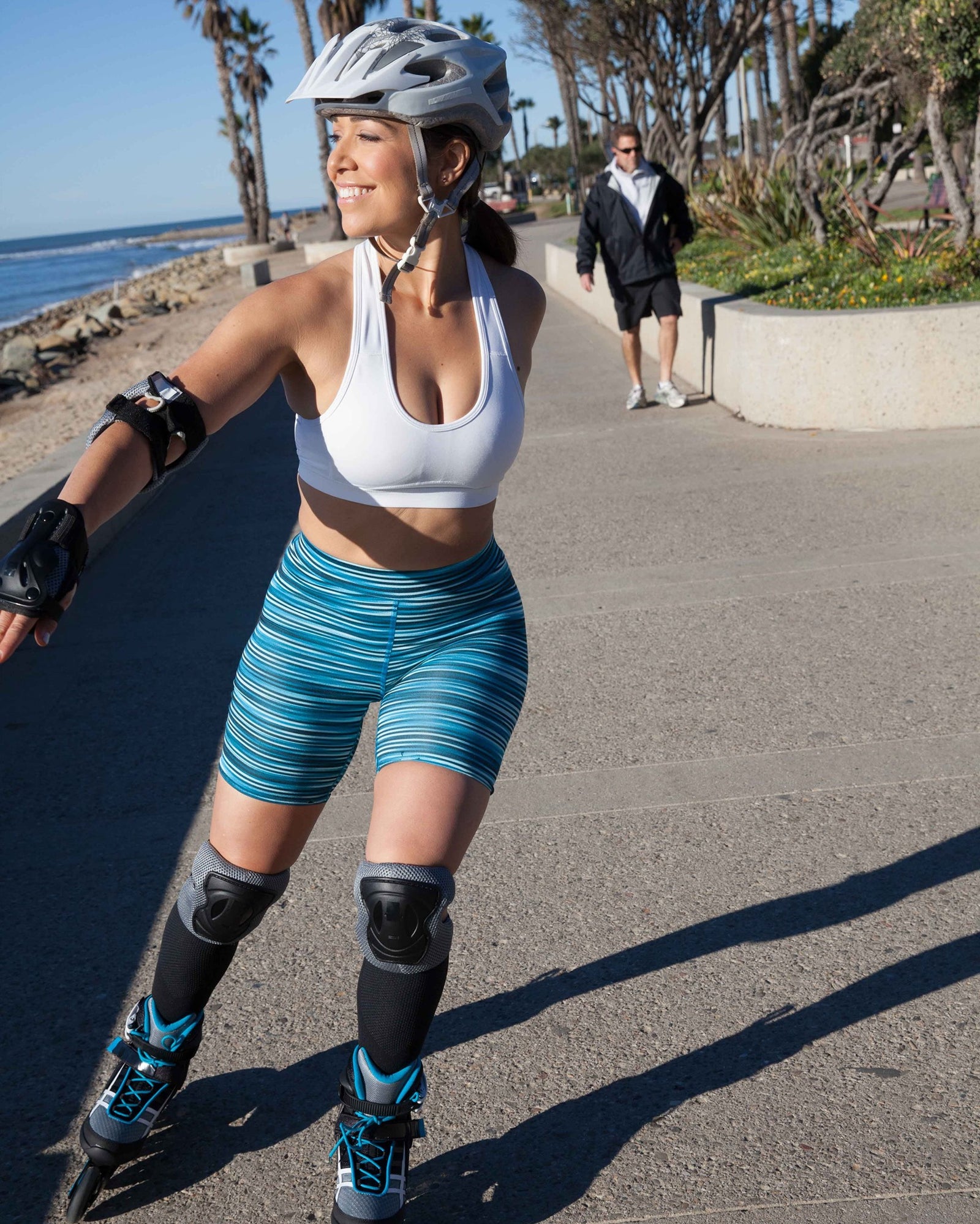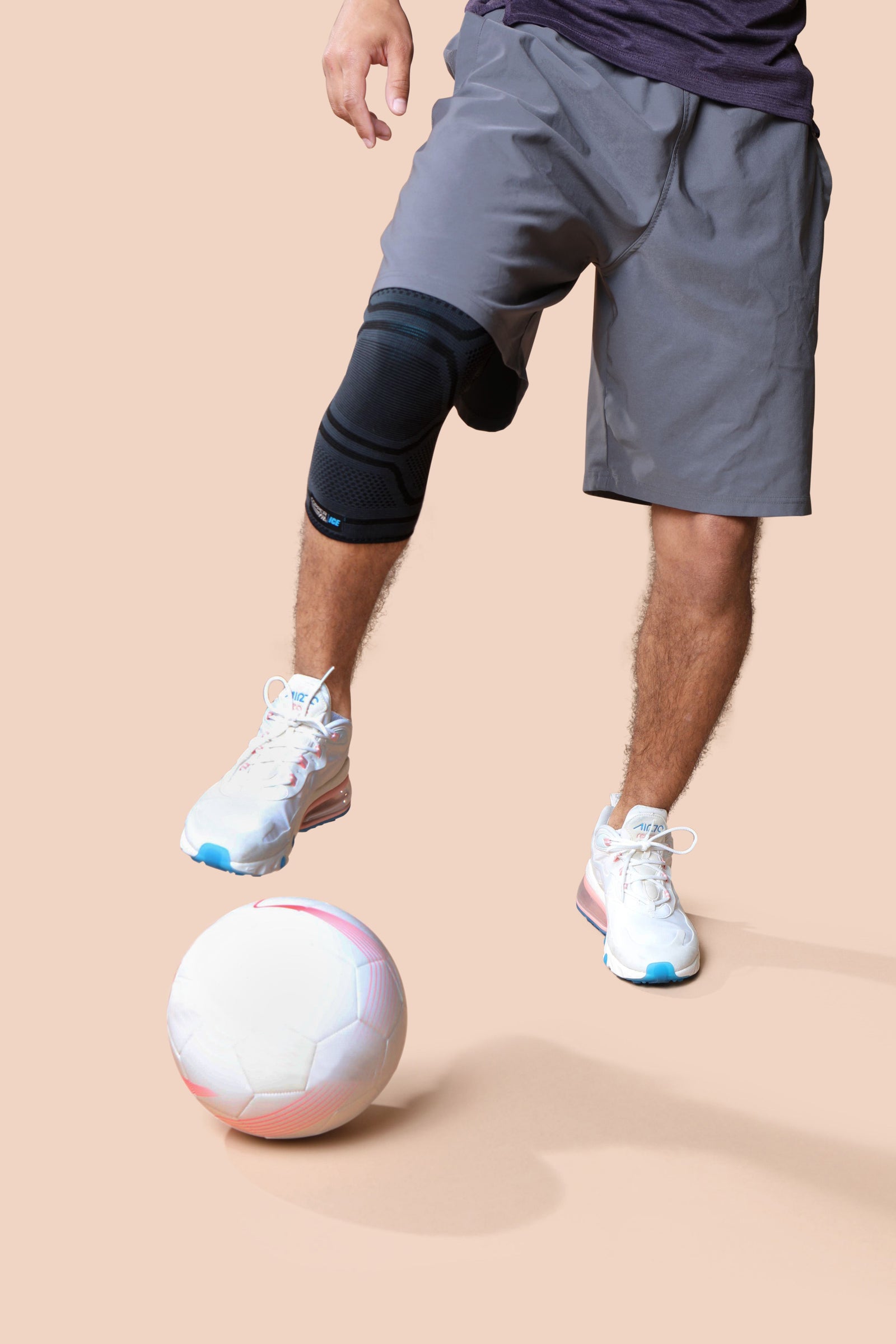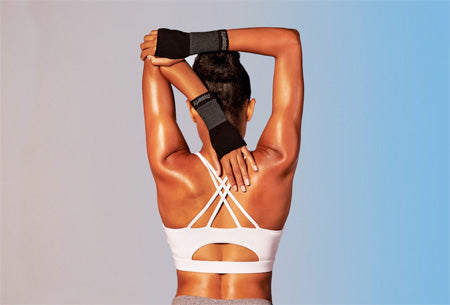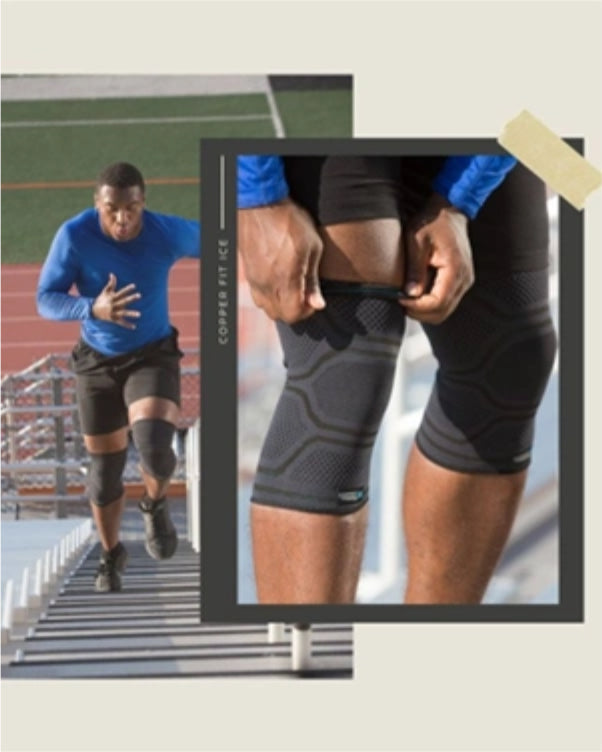
If you’ve noticed veins in your legs becoming more visible, bulging, or feeling a little different than they used to, you’re not alone. Varicose veins are incredibly common, especially if you spend long hours on your feet. While they can look dramatic, they’re often harmless. The key is knowing the difference between what’s normal and when it might be time to pay closer attention.
Let’s walk through what varicose veins are, why they happen, and what you can do to support healthy circulation and feel your best without jumping to worst-case scenarios.
What Are Varicose Veins?
Varicose veins are enlarged, twisted veins that most often appear on the legs. They're caused by a buildup of pressure in the veins, often when the tiny one-way valves inside those veins weaken or stop working efficiently. Instead of blood flowing smoothly back toward your heart, it can pool in the legs, stretching the vein walls and making them more noticeable.
These veins may appear blue, purple, or bulging. Some people notice heaviness or mild discomfort in their legs, especially after standing or sitting for long periods. Others might not feel anything at all, other than a change in how their veins look.
Even though the appearance can be surprising at first, varicose veins themselves aren’t always something to worry about. They’re part of how the body responds to long-term pressure on the circulatory system, and they often show up as we age or become more active.
What Are Some Common Causes of Varicose Veins?
Understanding what contributes to varicose veins can help you take proactive steps to support your body. Some factors are out of your control, but others are manageable with daily habits.
Here’s what might increase your chances of developing them:
- Age: As you get older, vein walls and valves can naturally weaken.
- Genetics:If a parent or sibling has varicose veins, you may be more likely to get them.
- Hormones:Hormonal changes, including those during pregnancy or menopause, can make veins more vulnerable.
- Lifestyle:Long periods of standing or sitting can slow down blood flow.
- Activity Level:High-impact activity or heavy lifting over time may contribute to venous pressure.
- Body Weight:Extra pressure on the lower body can make it harder for blood to circulate efficiently.
The good news? Many of these factors can be supported through movement, daily recovery habits, and circulation-friendly routines.
Varicose Veins: When Don’t You Need To Worry?
If your varicose veins aren’t causing discomfort, there’s usually no need for concern. In many cases, people live with them for years without any issues, especially when they stay active and take steps to support circulation.
You probably don’t need to worry if your veins aren’t causing soreness or tension, even if they are looking more visible. Another good sign is if any mild discomfort or feelings of heaviness in the leg you may experience improves with rest or elevation.
While swelling or puffiness in the legs can be concerning, if it goes away on its own or if you’re only noticing it after spending long days on your feet, it’s probably a sign that your legs just need some rest and extra TLC.
When ShouldYou Check In With a Medical Professional?
While varicose veins are often harmless, they can occasionally raise your risk for certain medical complications, such as ulcers or blood clots. With this in mind, there are some situations where it’s a good idea to get a professional opinion. If anything feels different than usual or interferes with your daily movement, it’s worth asking a healthcare provider.
We recommend seeking medical attention if:
- Ongoing soreness or discomfort doesn’t ease with movement or elevation.
- Skin around the vein becomes discolored, irritated, or warm.
- Veins suddenly feel hard, swollen, or tender to the touch.
- You notice open sores near the ankle or calf.
- One leg appears significantly more swollen than the other.
These signs don’t automatically mean something serious is happening, but they do deserve a closer look. The earlier you address any circulatory concerns, the more options you’ll have to stay mobile and comfortable.
Everyday Tips To Help Support Healthy Circulation
Even though varicose veins aren’t always a medical concern, there are steps you can take to support circulation, reduce tension in your legs, and feel more comfortable day to day. While you can’t change your genetics or age, you can absolutely support your body’s natural recovery and circulation systems.
A few small daily habits can go a long way in keeping your legs feeling lighter, more energized, and less prone to tension. These tips can benefit anyone, whether you’re seeing visible changes already or just trying to stay ahead of the discomfort that can come with long hours on your feet.
Get Moving
Regular physical activity helps your leg muscles contract, which naturally helps move blood back toward the heart.
Try incorporating:
- Walking (even short, frequent walks around the house or office)
- Calf raises and toe lifts to activate your lower leg muscles
- Cycling, swimming, or other low-impact exercises that get the blood moving without excess strain
If you sit or stand for long stretches, building in short movement breaks every 30-60 minutes makes a big difference. Even something as simple as ankle rolls, calf raises, or marching in place can help support healthy blood flow and reduce feelings of heaviness or fatigue.
The key is consistency. Keeping your legs moving throughout the day supports your body’s natural recovery processes and helps your veins work the way they’re designed to.
Try Compression Gear
Compression gear is a go-to for people looking to support leg comfort and circulation, especially if they’re dealing with varicose veins. Graduated compression is designed to apply gentle pressure to the lower legs, which can help support blood flow and soothe feelings of soreness and fatigue.
Many people find that wearing compression socks during the day helps calm tension and support recovery after physical activity or long hours on their feet. Look for products that combine flexible support with breathable materials that don’t restrict movement or cause chafing.
Elevate When You Rest
If your legs feel tired or puffy at the end of the day, spending a few minutes with them elevated can offer a noticeable difference. Propping your legs up above the level of your heart on a pillow or cushioned surface can assist the natural return of blood toward the upper body and give your veins a break from working against gravity.
This small recovery step can be especially helpful after workouts, long walks, or time spent traveling.
Try Hot or Cold Therapy
Temperature therapy can also be part of a smart self-care routine. Cold therapy is typically used for more recent soreness or swelling, while heat therapy is often used for older or ongoing muscle tension. Always follow guidelines for duration and application, and pay attention to how your body responds.
Using temperature-based recovery tools alongside light movement, stretching, and compression can create a well-rounded approach to feeling better and staying active, even with visible veins.
Consider your Diet
Circulation and vein health don’t exist in isolation. They’re influenced by your overall wellness. Supporting your body from the inside out can go a long way.
Nutrients like fiber, vitamin C, and antioxidants support vein structure and overall vascular wellness. And remember to stay hydrated! Drinking enough water helps keep blood volume at healthy levels and supports the function of your circulatory system.
There’s no single solution for varicose veins, but daily habits can work together to ease tension, support blood flow, and help you feel more comfortable doing what you love.
The Bottom Line
At Copper Fit, we believe staying active should feel good, and we know firsthand what it’s like when soreness or visible changes start to hold you back. That’s why we create recovery-focused products designed to support what your body already does naturally.
Whether you’re on your feet all day or getting back into a fitness routine, you deserve tools that help soothe discomfort, promote muscle relaxation, and keep you moving forward. If varicose veins are part of your story, you’re not alone and you’re not stuck. You’ve got options.
From smart movement strategies to compression gear that supports circulation, you can take small, effective steps that help you feel better in your body every day. We’re here for that.
Sources:
Varicose Veins: Causes & Treatment | Cleveland Clinic
Ice Packs vs. Warm Compresses For Pain | Johns Hopkins Medicine

